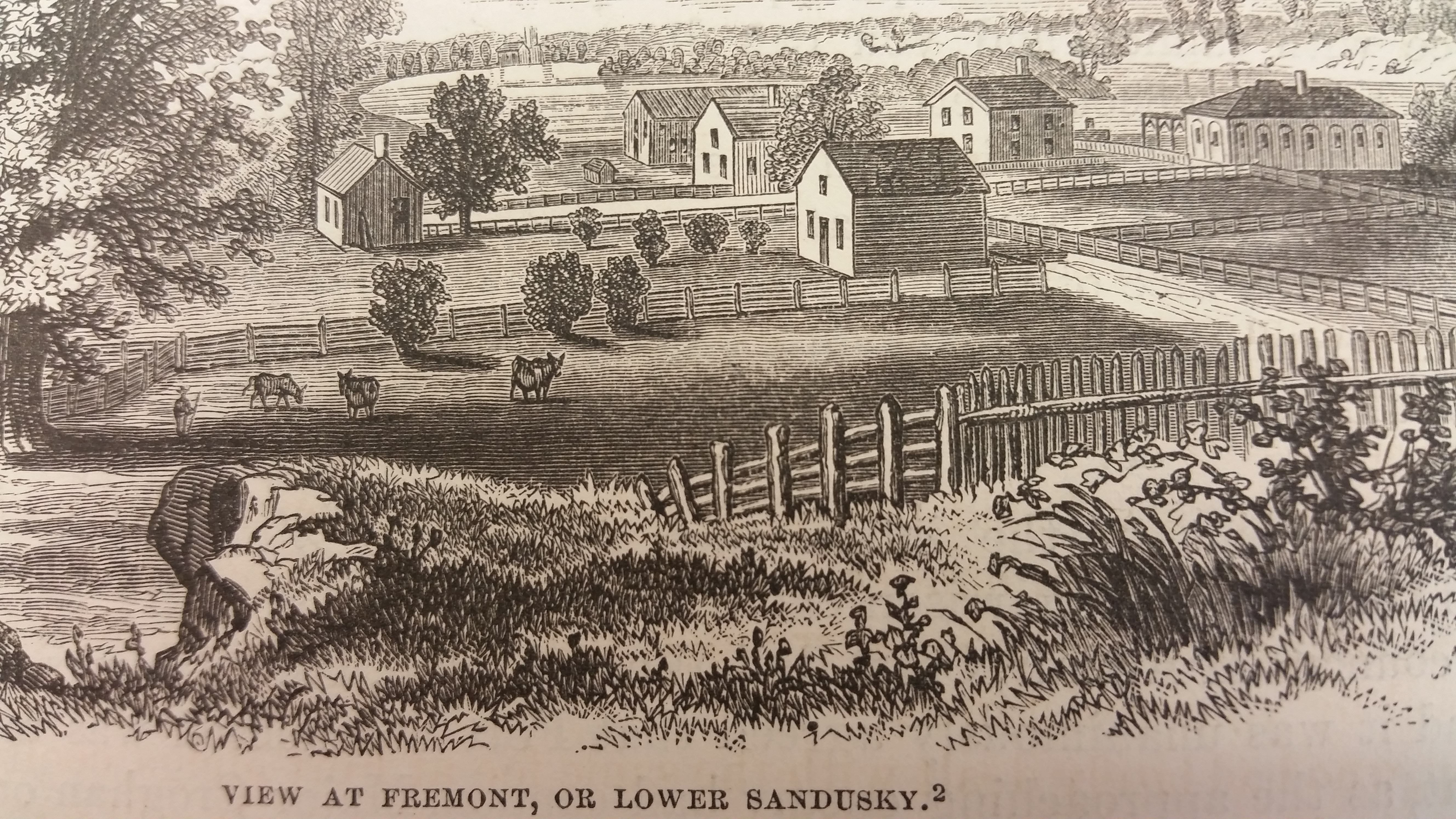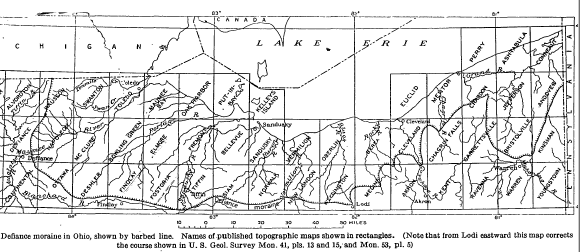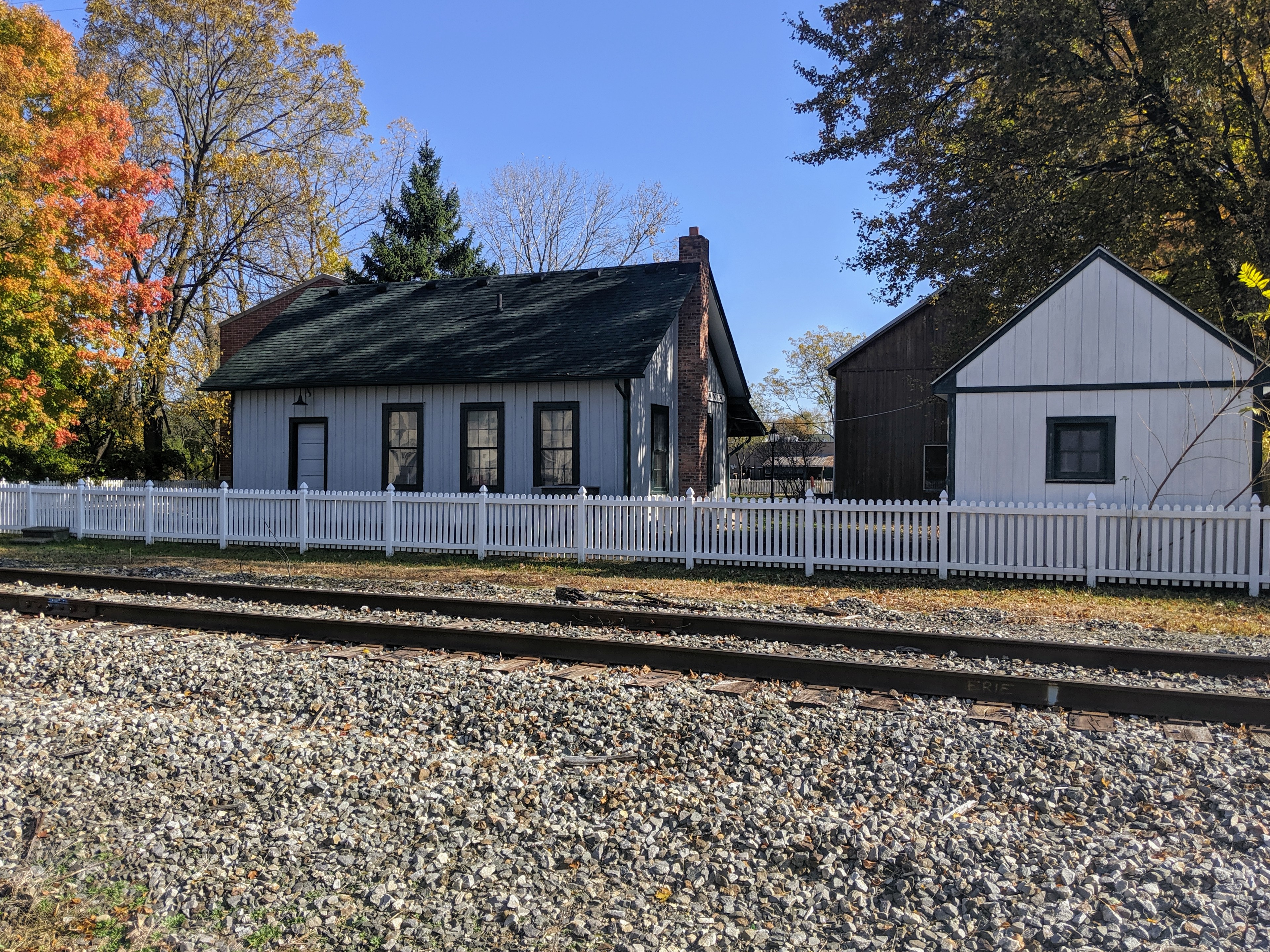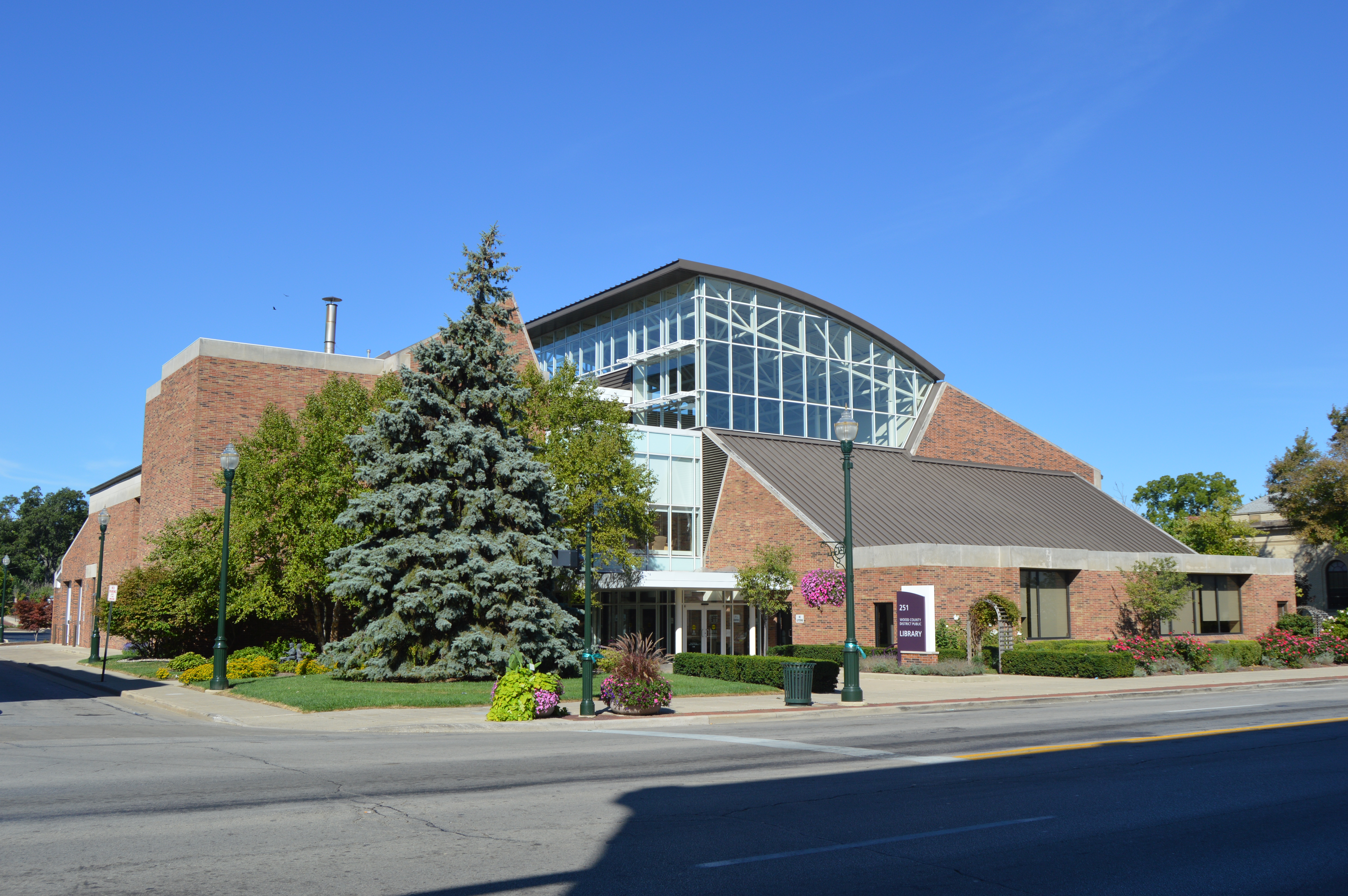|
Northwestern Ohio
Northwest Ohio, or Northwestern Ohio, consists of multiple counties in the northwestern corner of the US state of Ohio. This area borders Lake Erie, Southeast Michigan, and northeastern Indiana. Some areas are also considered the Black Swamp area. The Toledo metropolitan area is part of the region. Northwest Ohio's population in 2000 was 1,639,144 and is declining, specifically in the northern regions (counties shaded in the darker blue and Allen County). However, southern areas, such as Marion and Morrow Counties, and the City of Findlay are growing. Largest municipalities Toledo is the principal city of Northwest Ohio. Most of the region's television channels and radio stations are licensed in Toledo, Perrysburg or nearby Bowling Green. Though Toledo is an industrial city, Northwest Ohio is primarily agricultural with small centers of commerce distributed across region. Since the 1970s, the population of Lucas County and the Toledo metropolitan area has declined, though Wood ... [...More Info...] [...Related Items...] OR: [Wikipedia] [Google] [Baidu] |
Lima, Ohio
Lima ( ) is a city in and the county seat of Allen County, Ohio, United States. The municipality is located in northwest Ohio along Interstate 75 in Ohio, Interstate 75 approximately north of Dayton, Ohio, Dayton, southwest of Toledo, Ohio, Toledo, and southeast of Fort Wayne, Indiana. As of the United States Census, 2020, 2020 census, the city had a population of 35,579. It is the principal city of the Lima, Ohio metropolitan statistical area, which is included in the Lima–Van Wert–Wapakoneta, OH, combined statistical area. Lima was founded in 1831. The Lima Army Tank Plant, officially called the Joint Systems Manufacturing Center, built in 1941, is the sole producer of the M1 Abrams. History Lima was named after Lima, Peru's capital city. Shawnee and establishment In the years after the American Revolution, the Shawnee were the most prominent residents of west central Ohio, growing in numbers and permanency after the 1794 Treaty of Greenville. By 1817, the United ... [...More Info...] [...Related Items...] OR: [Wikipedia] [Google] [Baidu] |
Fremont, Ohio
Fremont is a city in and the county seat of Sandusky County, Ohio, United States, located along the banks of the Sandusky River. It is about 35 miles from Toledo and 25 miles from Sandusky. It is part of the Toledo metropolitan area. The population was 16,734 at the 2010 census. The city was the home of Rutherford B. Hayes, who served as President of the United States from 1877 to 1881. The Rutherford B. Hayes Presidential Center was the first presidential library and is one of the focal points of the city. The National Arbor Day Foundation designated Fremont as a Tree City USA. History Fremont is located on the former site of Junquindundeh, an historic Wyandot village on the west bank of the lower Sandusky River, near the falls and about upstream from its mouth at Sandusky Bay. French merchants established a trading post there in the 1750s, but British forces took over the trading post and rest of the area after their victory in the French and Indian War. In 1787, the newl ... [...More Info...] [...Related Items...] OR: [Wikipedia] [Google] [Baidu] |
Defiance, OH Micropolitan Statistical Area
Defiance County is a county located in the U.S. state of Ohio. As of the 2020 census, the population was 38,286. Its county seat is Defiance. The county was named after an early Army fortification, Fort Defiance, which was so named by Mad Anthony Wayne to signify the settlers' "defiance" of the Indians. The Defiance, OH Micropolitan Statistical Area includes all of Defiance County. Geography According to the U.S. Census Bureau, the county has a total area of , of which is land and (0.7%) is water. Adjacent counties * Williams County (north) * Henry County (east) * Putnam County (southeast) *Paulding County (south) *Allen County, Indiana (southwest) *DeKalb County, Indiana (west) Demographics 2000 census As of the census of 2000, there were 39,500 people, 15,138 households, and 11,020 families living in the county. The population density was 96 people per square mile (37/km2). There were 16,040 housing units at an average density of 39 per square mile (15/km2). The ... [...More Info...] [...Related Items...] OR: [Wikipedia] [Google] [Baidu] |
Defiance County, Ohio
Defiance County is a county located in the U.S. state of Ohio. As of the 2020 census, the population was 38,286. Its county seat is Defiance. The county was named after an early Army fortification, Fort Defiance, which was so named by Mad Anthony Wayne to signify the settlers' "defiance" of the Indians. The Defiance, OH Micropolitan Statistical Area includes all of Defiance County. Geography According to the U.S. Census Bureau, the county has a total area of , of which is land and (0.7%) is water. Adjacent counties * Williams County (north) * Henry County (east) * Putnam County (southeast) *Paulding County (south) *Allen County, Indiana (southwest) *DeKalb County, Indiana (west) Demographics 2000 census As of the census of 2000, there were 39,500 people, 15,138 households, and 11,020 families living in the county. The population density was 96 people per square mile (37/km2). There were 16,040 housing units at an average density of 39 per square mile (15/km2). The ... [...More Info...] [...Related Items...] OR: [Wikipedia] [Google] [Baidu] |
Defiance, Ohio
Defiance is a city in and the county seat of Defiance County, Ohio, United States, about southwest of Toledo, Ohio, Toledo and northeast of Fort Wayne, Indiana, in Ohio's northwestern corner. The population was 16,494 at the 2010 United States Census, 2010 census. History The city contains the site of Fort Defiance (Ohio), Fort Defiance, built by General "Mad" Anthony Wayne in August 1794, during the Northwest Indian War at the confluence of the Auglaize River, Auglaize and Maumee River, Maumee rivers. General Wayne surveyed the land and declared to Charles Scott (governor), General Scott, "I defy the English, Indians, and all the devils of hell to take it." Using the fort as a base of operations, Wayne ordered his troops to destroy Native Americans in the United States, Native American crops and villages within a radius of around the fort. Today a pair of cannons outside the city library on the Maumee River overlook the confluence and mark the location of Fort Defiance, alon ... [...More Info...] [...Related Items...] OR: [Wikipedia] [Google] [Baidu] |
Tiffin, Ohio Micropolitan Area
Seneca County is a county located in the northwestern part of the U.S. state of Ohio. As of the 2020 census, the population was 55,069. Its county seat is Tiffin. The county was created in 1820 and organized in 1824. It is named for the Seneca Indians, the westernmost nation of the Iroquois Confederacy. This people were based in present-day New York but had territory extending into Pennsylvania and Ohio. Seneca County comprises the Tiffin, OH Micropolitan Statistical Area, which is also included in the Findlay-Tiffin, OH Combined Statistical Area. History This area was long occupied by a succession of indigenous peoples. During and after the colonial period, French, British and American fur traders established relations with the historic peoples of the time. The county was barely inhabited by European Americans until the 1830s, but this period was one of steady migration by settlers from New York and New England. The migration was stimulated by completion of the Erie Cana ... [...More Info...] [...Related Items...] OR: [Wikipedia] [Google] [Baidu] |
Seneca County, Ohio
Seneca County is a county located in the northwestern part of the U.S. state of Ohio. As of the 2020 census, the population was 55,069. Its county seat is Tiffin. The county was created in 1820 and organized in 1824. It is named for the Seneca Indians, the westernmost nation of the Iroquois Confederacy. This people were based in present-day New York but had territory extending into Pennsylvania and Ohio. Seneca County comprises the Tiffin, OH Micropolitan Statistical Area, which is also included in the Findlay-Tiffin, OH Combined Statistical Area. History This area was long occupied by a succession of indigenous peoples. During and after the colonial period, French, British and American fur traders established relations with the historic peoples of the time. The county was barely inhabited by European Americans until the 1830s, but this period was one of steady migration by settlers from New York and New England. The migration was stimulated by completion of the Erie Cana ... [...More Info...] [...Related Items...] OR: [Wikipedia] [Google] [Baidu] |
Tiffin, Ohio
Tiffin is a city in and the county seat of Seneca County, Ohio, United States. Developed along the Sandusky River, which flows to Lake Erie, Tiffin is about 55 miles southeast of Toledo. The population was 17,963 at the 2010 census.U.S. Census website U.S. Census Bureau. February 4, 2011. Retrieved April 5, 2011. The National Arbor Day Foundation has designated Tiffin as a . It is the home of and |
Sylvania, Ohio
Sylvania is a city in Lucas County, Ohio, United States. The population was 19,011 at the 2020 census. Sylvania is a suburb of Toledo, and encompassed by Sylvania Township. Its northern border is the southern border of the state of Michigan. The name "Sylvania" is borrowed from the Latin ''sylvan'' or '' sylva'', meaning "forest land", owing to the dense forests that once made up the region, part of the Great Black Swamp. History General David White is considered the founder of Sylvania as the first pioneer settler and town supervisor, originally from Palmyra, New York. In 1832, White was given the title of General (possibly after services rendered during the War of 1812), which allowed him to explore the western Lake Erie region. In realizing the potential of some available land to the north of Maumee, Ohio, a notable port city at the time, he acquired a title to the land and built a log cabin at what would eventually be the corner of Summit and Monroe streets near downtown ... [...More Info...] [...Related Items...] OR: [Wikipedia] [Google] [Baidu] |
Perrysburg, Ohio
Perrysburg is a city located in Wood County, Ohio, Wood County, Ohio, United States, along the south side of the Maumee River. The population was 25,041 at the 2020 United States Census, 2020 census. Part of the Toledo metropolitan area, the city is southwest of Toledo, Ohio, Toledo. Perrysburg is the second-largest city in Wood County, after the county seat of Bowling Green, Ohio, Bowling Green. History Early history Perrysburg lies near the center of the Twelve Mile Square Reservation, a tract of land ceded in 1795 to the United States, United States of America by the Ottawa people following their defeat in the Northwest Indian Wars. They had occupied this territory since the turn of the 18th century, after having settled in the region of the French trading post at Fort Detroit. The Ottawa had controlled much of the territory along the Maumee River in present-day northwestern Ohio. In 1810, early European-American settlers here were Major Amos Spafford (1753-1818), his wife Ol ... [...More Info...] [...Related Items...] OR: [Wikipedia] [Google] [Baidu] |
Wood County, Ohio
Wood County is a county located in the U.S. state of Ohio. As of the 2020 census, the population was 132,248. Its county seat is Bowling Green. The county was named for Captain Eleazer D. Wood, the engineer for General William Henry Harrison's army, who built Fort Meigs in the War of 1812. Wood County is part of the Toledo, OH Metropolitan Statistical Area. Its diagonal northwest border is formed by the Maumee River, which has its mouth at Maumee Bay on Lake Erie. History Wood County was established on February 12, 1820, following a treaty and land purchase from local Indian tribes. Perrysburg was the first county seat, and remained the county seat until 1870, when it was moved to Bowling Green. Wood County established its first health department in 1920. During the Great Depression in 1933 Wood County was the site of an early penny auction. Geography According to the U.S. Census Bureau, the county has a total area of , of which is land and (0.5%) is water. Adjacent co ... [...More Info...] [...Related Items...] OR: [Wikipedia] [Google] [Baidu] |





